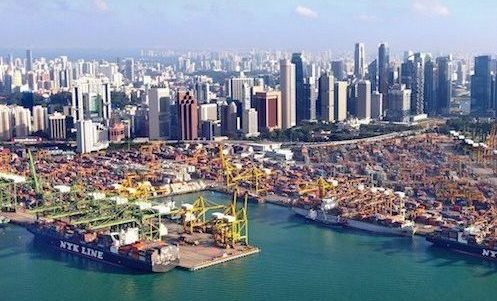Singapore says LNG is the only viable fuel solution, readies incentives

Singaporean authorities are pushing LNG as shipping’s fuel of the future, readying a swathe of incentives for shipping companies that decide to use gas instead of bunker fuel.
Speaking today at the Singapore Registry of Ships Forum, Quah Ley Hoon, chief executive of the Maritime And Port Authority (MPA) of Singapore, outlined plans to expand the country’s green shipping handouts.
The Maritime Singapore Green Initiative (MSGI), in existence since 2011, is being beefed up with a new incentive to encourage the adoption of LNG.
“LNG is a cleaner and greener fuel than existing available options and is the only viable solution at scale for the shipping industry for now,” Quah said.
Singapore is LNG bunkering ready. MPA expects its two LNG bunker tankers to facilitate ship-to-ship LNG bunkering for ocean going vessels from the second half of next year onwards.
“We are excited about the developments in LNG bunkering and will continue to work with partners to develop our ecosystem and infrastructure to position ourselves as a key LNG bunkering hub for the region and the world,” Quah said.
While LNG as a ship fuel has enjoyed strong support from many governments, notably France and Singapore, some researchers remain unconvinced that it solves shipping’s long term green challenge.
LNG as a ship fuel will not meet shipping’s 2050 pledge to slash emissions in half, a e white paper issued in January from Imperial College London’s Sustainable Gas Institute suggested.
The greenhouse gas benefits of natural gas as a transport fuel are useful in the short term, but must be coupled with additional energy efficiency measures and longer term plans, the white paper urged.
Natural gas as a transport fuel has the potential to reduce greenhouse gas emissions in ships by at least 10%, the white paper stated.
“In shipping, natural gas engines, in combination with ambitious energy efficiency improvements, may go a long way towards achieving the required GHG reduction, potentially reducing these by 35% relative to 2008 fleet emissions. However, even assuming very challenging rates of efficiency improvement it appears difficult to meet a 50% GHG emissions reduction target by 2050 using natural gas engines and ship efficiency improvements alone,” the gas report stated.
The researchers predicted other fuel types would come into play before 2050.
“Deeper decarbonisation appears possible if a lower emissions ship technology such as hydrogen fuel cell ships becomes available in the period from 2040 and 2050, potentially leading to a 50% reduction against 2008 fleet emissions. In the meantime, the emissions benefit of natural gas in shipping is attractive, particularly when considered alongside the air pollution benefits,” the white paper stated.

….but is it safe? I may not be an expert on the subject, but it appears to me that LNG is orders of magnitude more hazardous than FO bunkers.
No one appears willing to address these concerns that I am not alone in exprssing.